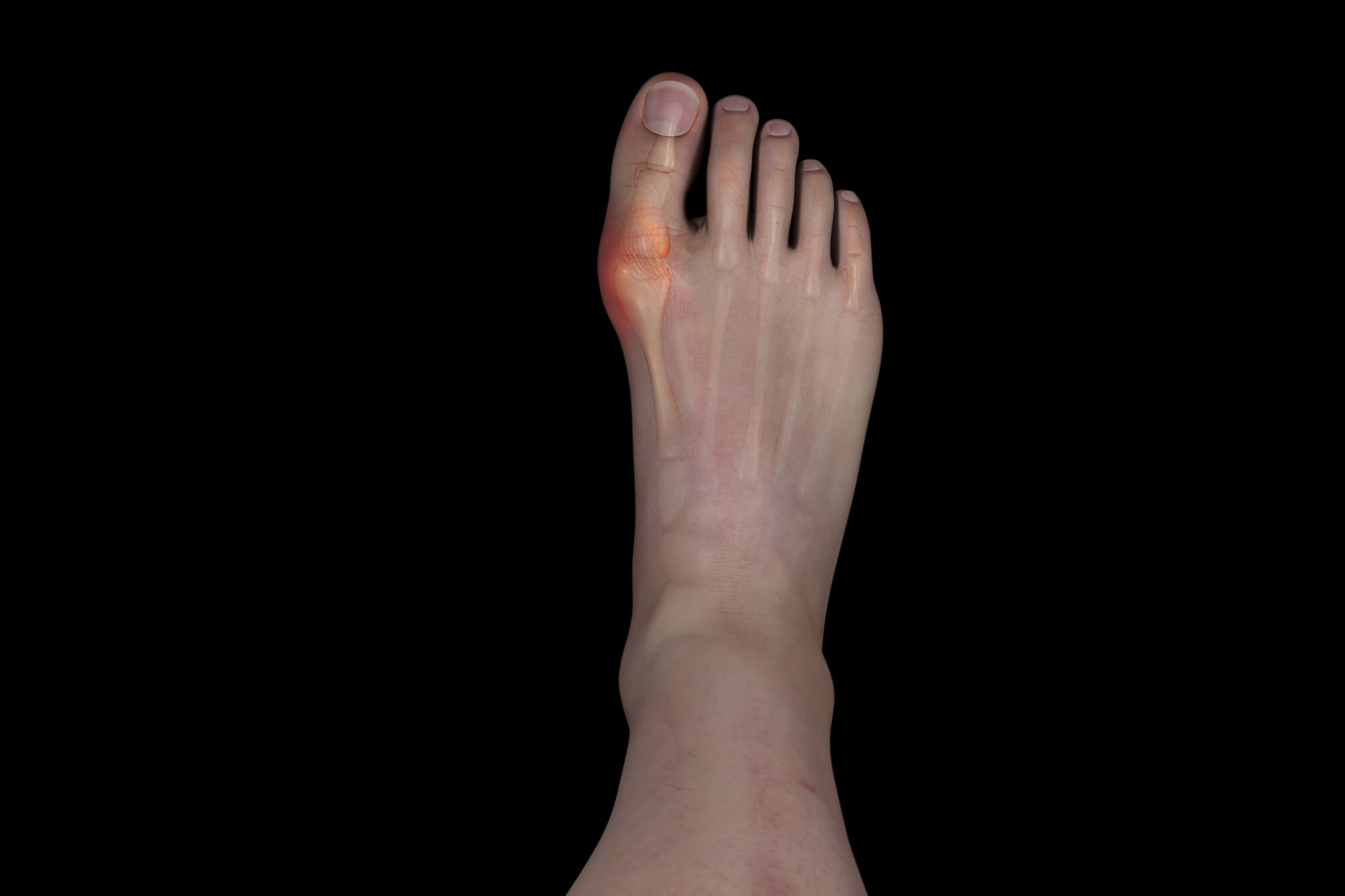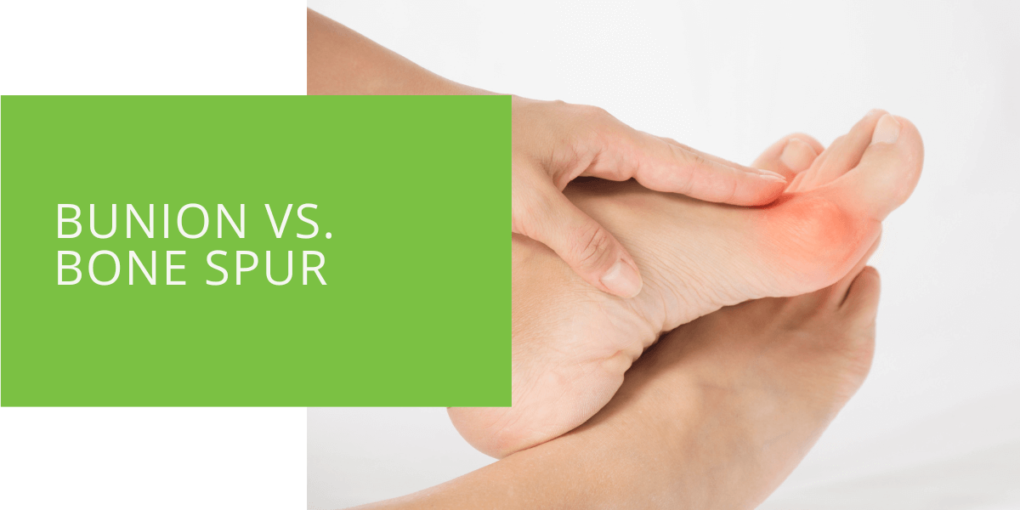Bunion vs. Bone Spur
If you're experiencing foot pain, you may wonder if you have a bunion or a bone spur. While these two conditions can cause discomfort in your feet, they are not the same. This article will explore the differences between bunions and bone spurs, including their causes, symptoms, treatments, and prevention strategies.
What Are Bunions?
A bunion is a bony bump that forms at the base of the big toe joint. Bunions are often caused by wearing shoes that are too tight or too narrow, which can put pressure on the big toe joint and cause it to become misaligned. Over time, the joint can become inflamed, and a bony bump can form. Bunions may also be caused by genetic factors or underlying medical conditions, such as rheumatoid arthritis or gout.
The symptoms of bunions can include pain, redness, and swelling around the big toe joint. You may also notice a deformity in the joint, such as a toe that angles towards the second toe. Bunions may also cause calluses to form on the sole of the foot, and a fluid-filled sac called a bursa to develop over the bony bump.
What Are Bone Spurs?
A bone spur is an extra bone growth that develops on an existing bone. Bone spurs can occur anywhere in the body, but in the feet, they often develop on the top or sides of the toes or the heel. Bone spurs can be caused by various factors, including arthritis and wear and tear from activities like running or jumping.
The symptoms of bone spurs can include pain, tenderness, and limited range of motion in the affected joint. Bone spurs may also cause redness and swelling around the affected area. In some cases, bone spurs can cause hallux rigidus, a stiffening of the big toe joint, making it difficult to walk or bend your foot.

How Do Bunions and Bone Spurs Differ?
While bunions and bone spurs can both cause foot pain and discomfort, they are different conditions with different causes and treatments. Bunions are caused by pressure on the big toe joint, while bone spurs are caused by extra bone growth on an existing bone. Bunions typically cause a deformity in the joint, while bone spurs do not. In addition, bunions are often accompanied by calluses and fluid-filled sacs, while bone spurs may cause limited range of motion in the affected joint.
The treatment options for bunions and bone spurs also differ. For bunions, non-surgical options like orthotics and footwear changes may effectively reduce pain and discomfort. However, bunion surgery may be necessary in more severe cases to correct the deformity. Physical therapy and over-the-counter pain medication may be recommended for bone spurs to manage symptoms. In some cases, surgery may be necessary to remove the bone spur.
Prevention
The best way to prevent bunions and bone spurs is to take care of your feet and avoid activities that can cause damage to the bones and joints. Here are some tips to help prevent bunions and bone spurs from developing:
Wear Proper Footwear
One of the most common causes of bunions and bone spurs is wearing shoes that don't fit properly or don't provide enough support for your feet. Wear shoes that fit well and provide enough room for your toes to move around. Avoid wearing high heels or shoes that are too tight or narrow.
Stretch and Exercise Your Feet
Stretching and exercising your feet can help to keep them flexible and strong. This can help reduce the risk of developing bunions, bone spurs, and other foot problems. Try exercises like toe curls, raises, and ankle rotations to keep your feet in good shape.
Maintain a Healthy Weight
Being overweight can put extra pressure on your feet and increase your risk of developing bunions and bone spurs. Maintaining a healthy weight can help to reduce the strain on your feet and keep them healthy.

Management
If you're already experiencing foot pain or have been diagnosed with a bunion or bone spur, there are several things you can do to manage your symptoms and prevent the condition from getting worse.
Wear Comfortable Shoes
If you have a bunion or bone spur, wearing shoes that fit well and provide enough support can help to reduce pain and discomfort. Look for shoes with a wide toe box and good arch support, and avoid wearing high heels or shoes that are too tight or narrow.
Use Orthotics
Orthotics, or custom-made shoe inserts, can help to redistribute pressure on your feet and provide additional support. Your doctor may recommend orthotics to help relieve pain and prevent the condition from worsening.
Apply Heat or Cold
Applying heat or cold to the affected area can help to reduce inflammation and pain. Try applying a warm compress or taking a warm foot bath to reduce pain and stiffness. Ice can also help to reduce inflammation and swelling.
Consider Physical Therapy
If you have a bunion or bone spur, physical therapy can help to reduce pain and improve the range of motion in the affected joint. Your physical therapist can teach you exercises and stretches to help keep your feet flexible and strong.
Surgery
Surgery may sometimes be necessary to correct the underlying problem and relieve pain. Your doctor may recommend surgery if non-surgical treatments are ineffective or your condition is severe. Surgery may involve realigning the bones in the big toe joint or removing the bone spur. Recovery time will vary depending on your surgery type and the severity of your condition.
Conclusion
In conclusion, bunions and bone spurs are common foot conditions that cause pain and discomfort. While they may share some similarities, they are different conditions with different causes and treatments. If you're experiencing foot pain, it's important to seek professional medical advice to determine the underlying cause and develop an appropriate treatment plan. You can keep your feet healthy and pain-free by taking steps to prevent and manage these conditions. Remember to wear comfortable shoes, avoid high heels, and seek prompt medical attention if you notice any signs of foot pain or deformity.

